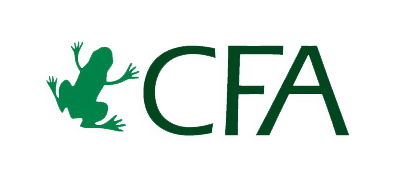Welcome to the Conservation Finance Guide. The overall goal is to provide practical tools to support the rapid expansion of sustainable finance mechanisms that generate long-term funding for biodiversity conservation.

Welcome to the Conservation Finance Guide. The overall goal is to provide practical tools to support the rapid expansion of sustainable finance mechanisms that generate long-term funding for biodiversity conservation.

The goal of this phase is to assess the feasibility of the system and identify potential challenges and optimal design options. The feasibility study can be designed to assess one entrance or activity fee system, but it would ideally be part of a PA Business Planning process that reviews options for complete long-term financing of the PA or PA system. Typically, the PA management authority will commission a consultant with business and financial planning expertise to conduct a comprehensive feasibility study, which may take several months to complete. The study should feed financial, management, planning, and operations information into the design phase. A sample terms of reference for a tourism-based finance feasibility study are provided in the Appendix. Costs can exceed US$25,000, and may vary substantially depending on the size of the area, existing data, management capacity, and other factors.
A feasibility study for entrance or activity fees should assess the key factors that may affect the viability and success of such a mechanism:
1) Economic Feasibility: Will the time and financial costs associated with the entrance and activity fee system greatly exceed the cost of establishment and management of that system? This is largely dependent on the attractiveness of the site and existing or potential infrastructure (roads, airports, trails, etc.)
2) Socio-Political Feasibility: Do socio-political considerations risk blocking or delaying implementation or cause excessive expenses? Are most stakeholders open to this concept? Will the PA management authority be able to retain revenue to use for conservation? If legal mechanisms for collecting and retaining visitor fees currently do not exist, is there a political will to enact new laws or regulations or to try to change existing ones?
3) Environmental Costs and Benefits: Will successful implementation benefit or pose serious risks to the ecological integrity of the sites under consideration.
4) Practical Implementation: Are the other basic issues that could derail or cause excessive transaction costs for the system (i.e. lack of transparency, trust, and risky financial management).
Box 1 provides a sample outline of a feasibility study for conservation finance solutions and a more detailed Excel™ worksheet is available for a detailed tourism fee feasibility assessment. The description of the finance solution should include a list and overview of specific infrastructure needed for implementation (e.g. entrance station or visitor centre), including scheduling, expected costs, and funding sources. The marketing strategy should consider socio-economics and demographics of current visitors relative to target markets, and financial projections should be based on historical and projected visitation rates. Market demand can be assessed through a willingness-to-pay (WTP) study or comparative study. WTP studies are sometimes implemented to better understand market demand for tourist sites and services (e.g. Bruner et al. 2015). However, WTP studies capture economic value and generally overestimate the actual cash a visitor is happy to pay for an entrance ticket to, or activity in, a PA or site of interest (Blumenschein et al. 1997). A more effective and lower cost approach is a comparative study that compares the PA or activity of interest with similar sites within the country or region and maps the price and quality of the experience. It should be noted that the entrance/activity fee does not exist in isolation but as part of the travel package that brought the visitor to the site, and their food, lodging and entertainment. Pricing must also consider the alternatives visitors have, and how values compare – for example, they could stay on a beach for free (a good value) or pay for a bus, guide, and entrance fee to a forest park. Often PAs near beach resorts offer a nice alternative experience to another day at the beach but risk pricing themselves out of the market.
Feasibility for tourism development should include a clear understanding of carrying capacity of a PA and its key tourist sites (Leung et al. 2018). It is critical for PA managers to identify the major environmental, social, and economic risks early on, in order to establish and implement mitigation strategies and safeguards. These strategies will inform the development of monitoring, evaluation, and adaptive management efforts (section 2.5), and the estimated costs of these strategies should be incorporated into the financial structure of the mechanism (section 2.3.2). Environmental and Social Impact Assessments are types of structured risk assessment that may be applied to proposed large-scale tourism development activities within PAs and their buffer zones.
Overview
1. Understanding Entrance and Activity Fees
1.2 Stakeholders
1.3 Potential in Monetary Terms
1.4 When is it Feasible and Appropriate?
1.5 Strengths, Risks, and Challenges
2. Methodology
2.1 Scoping
2.2 Feasibility
2.3 Design
2.4 Implementation
2.5 Monitoring, Evaluation, and Adaptive Management
3. How to Improve the Impact of Existing Systems
Appendix: Generic Terms of Reference (ToR) for a Feasibility Assessment